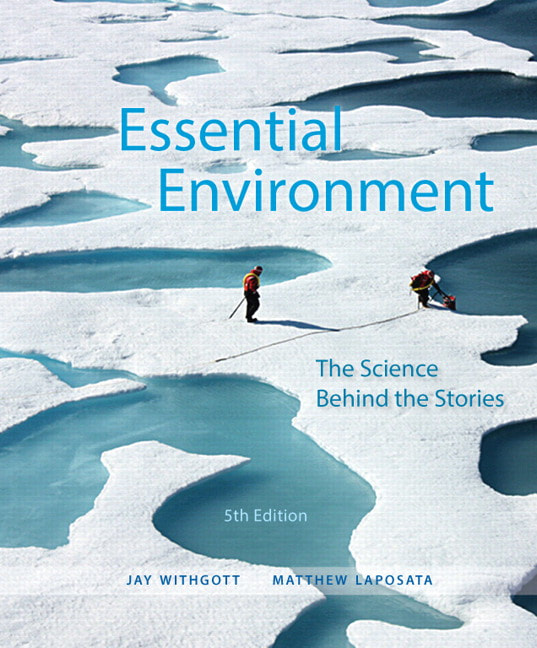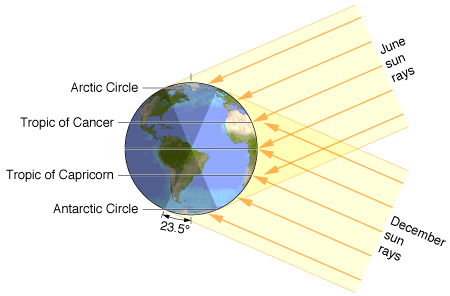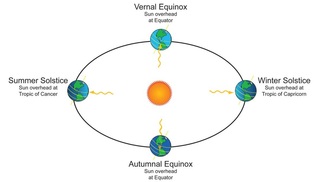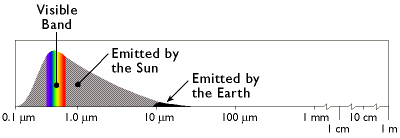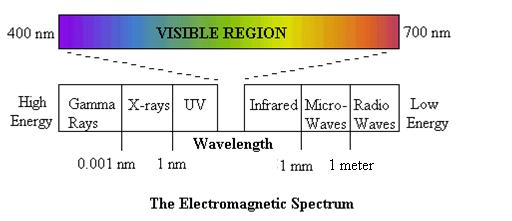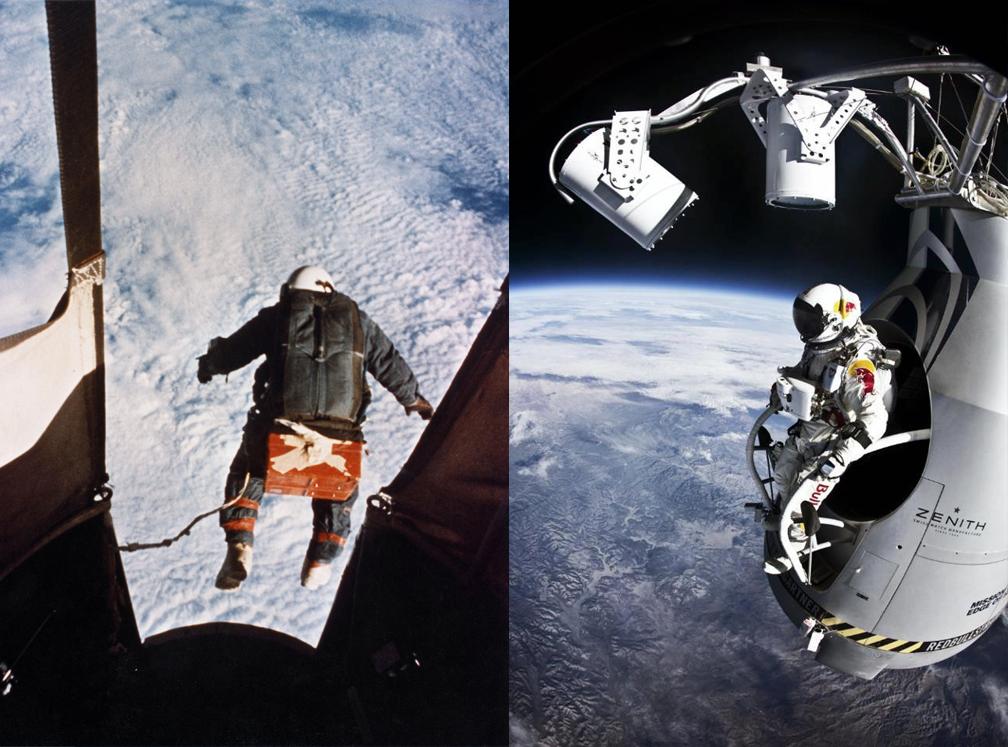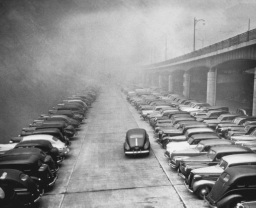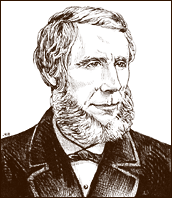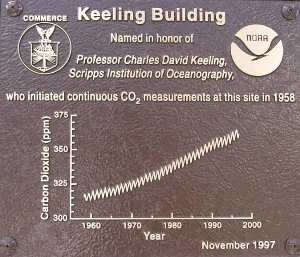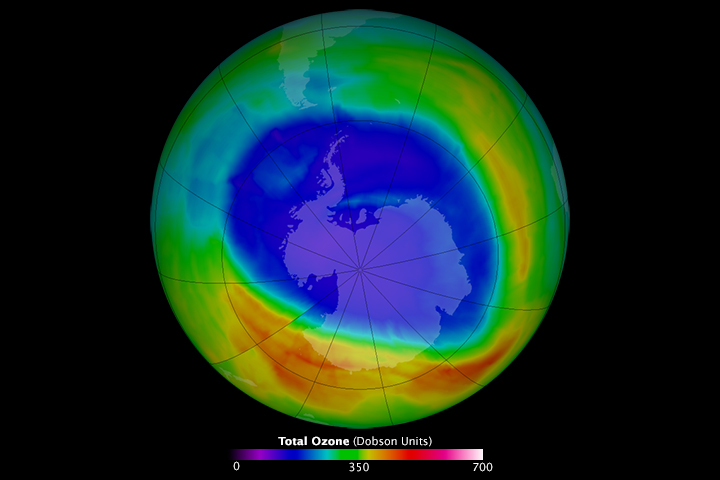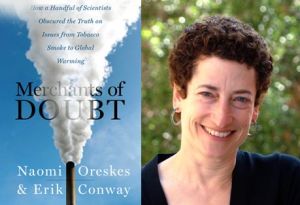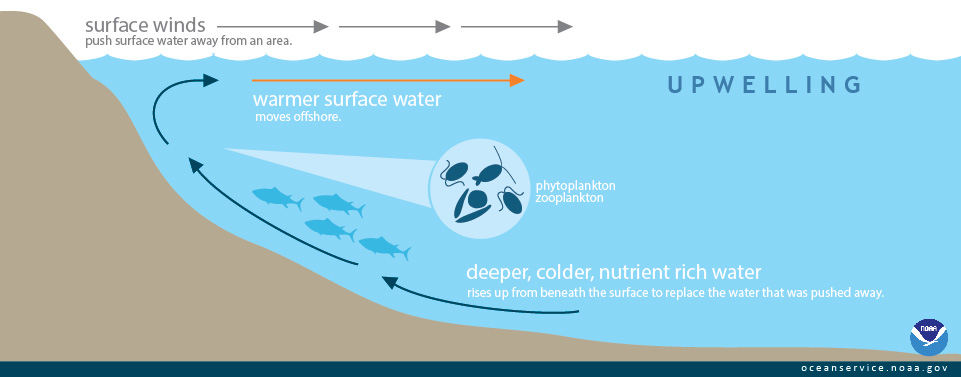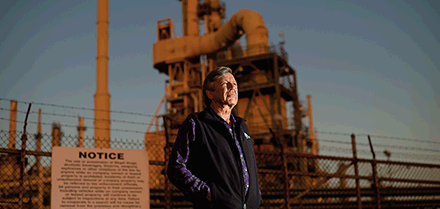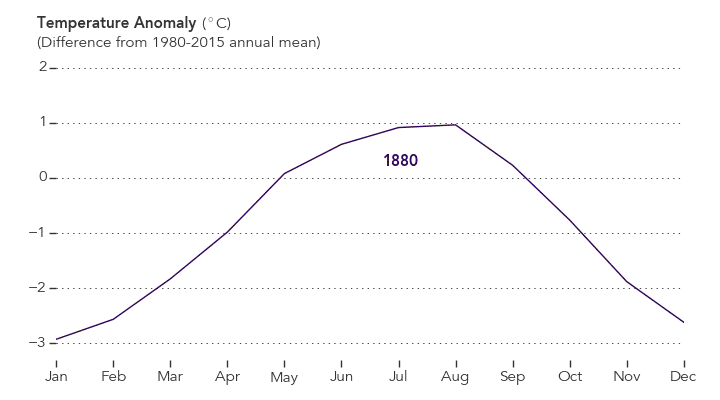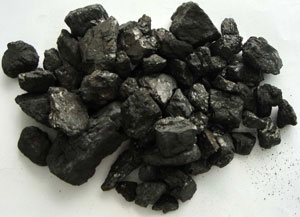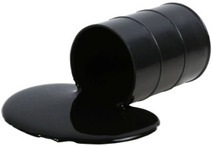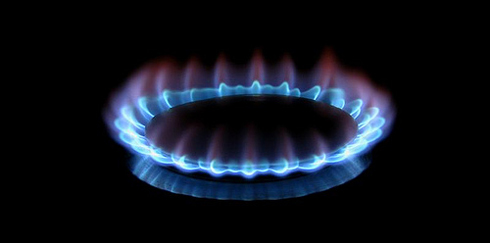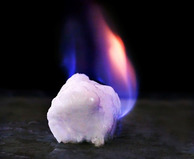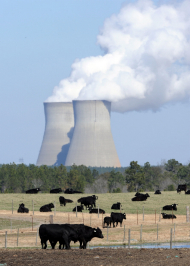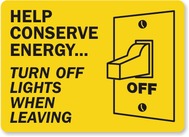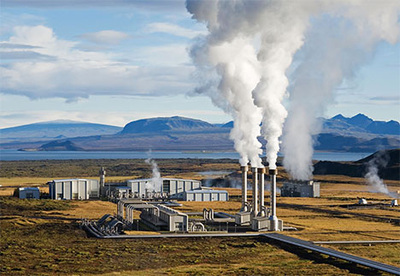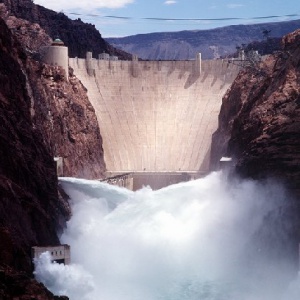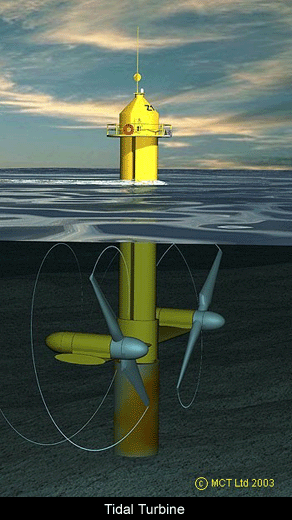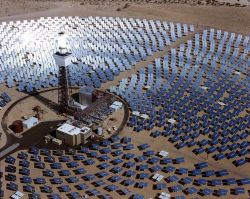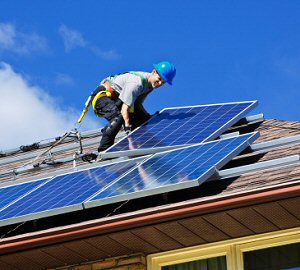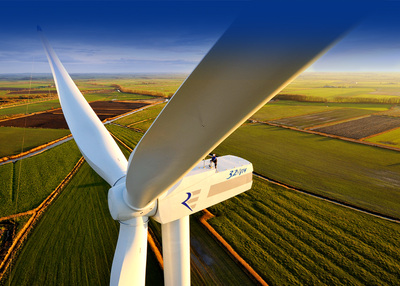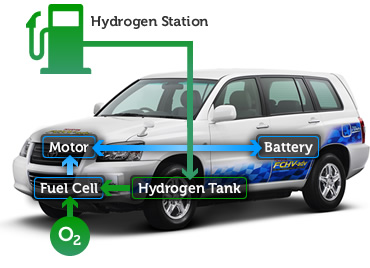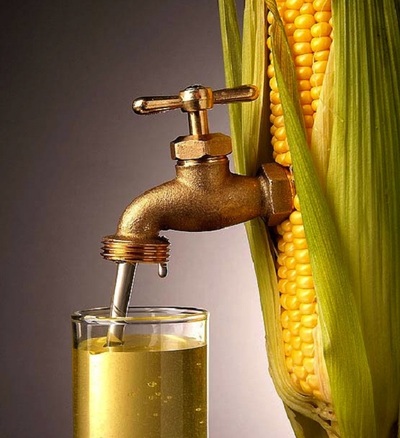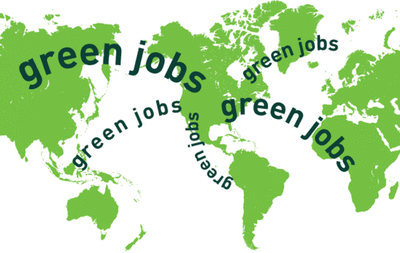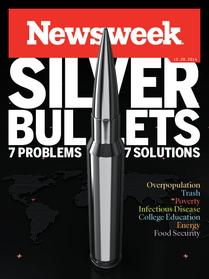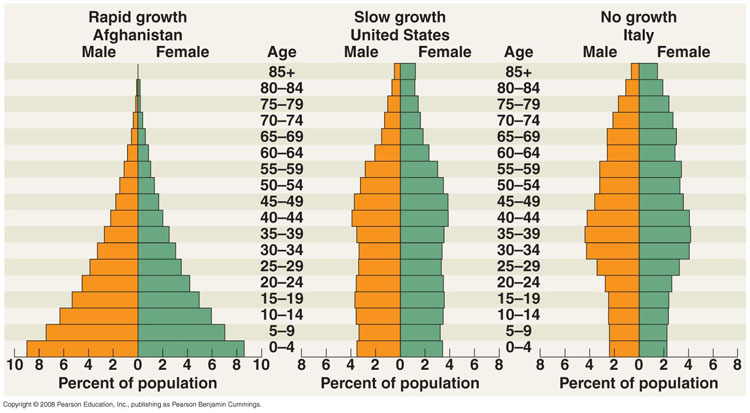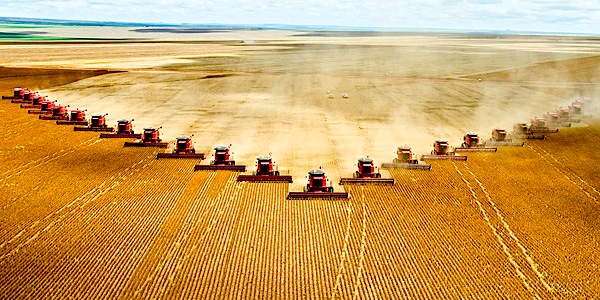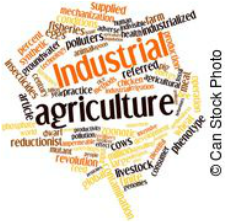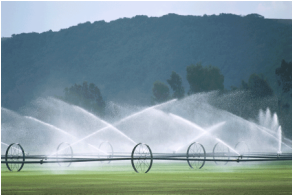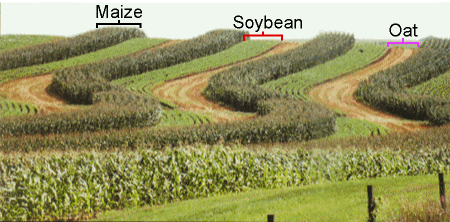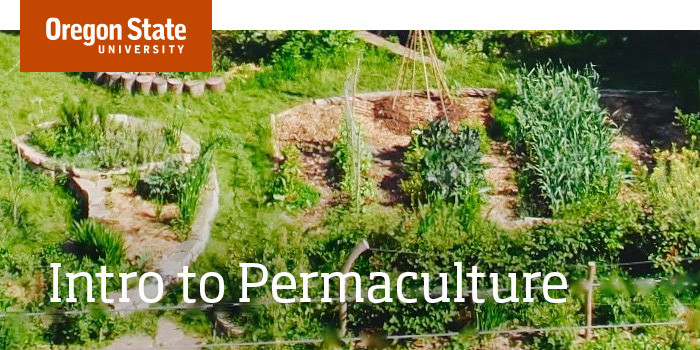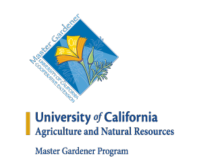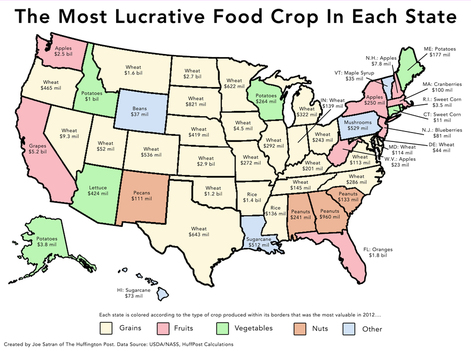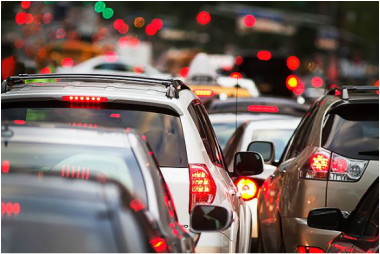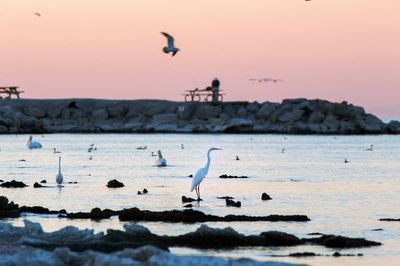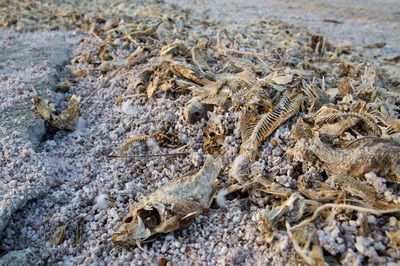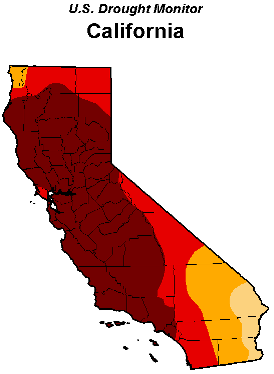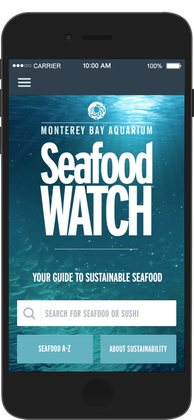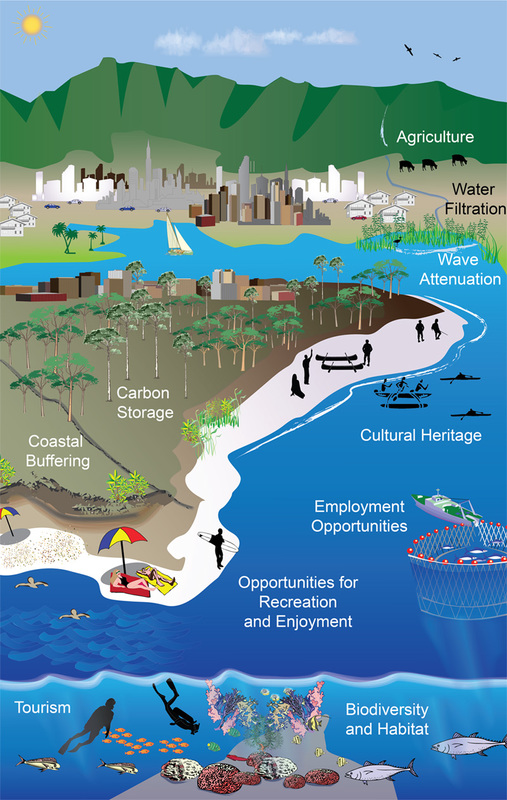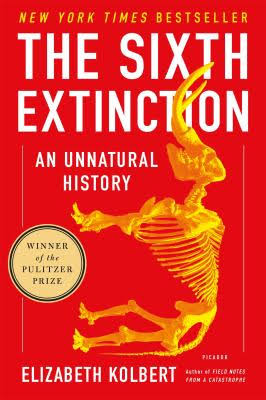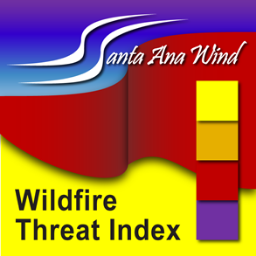Fall 2017
Environmental Science 1: Physical Processes
Course Description
The Human Environment: Physical Processes (3) UC:CSU
Prerequisite: None
Lecture, 3 hours
An Introductory course which deals with the relationships between humans and the planet, and how we deal with such factors as pollution, consumption of natural resources, population, energy, and land use.
Fall 2017 SYLLABUS |
| ||||||||||||
Assignment Guidelines (for all assignments):
Assignments do not require a cover sheet (unless otherwise specified), however you are required to include your name, course name, section number, and date of submission on ALL assignments (see sample below). If you are unclear about this, please ask me! ALL assignments must be typed, unless otherwise noted. Extra Credit submissions? Require documentation (photo, citations, ticket stubs, or equivalent).
| sample assignment format for all classes updated.pdf | |
| File Size: | 4 kb |
| File Type: | |
Course Materials (by chapter, in the same order as the schedule on the syllabus):
Chs 13 &14 (atmosphere & climate, respectively)
|
image source: http://scijinks.jpl.nasa.gov/solstice/
image source: http://physics.weber.edu/schroeder/ua/SunAndSeasons.html
|
|
2. To help you review chapter 13, print these materials - worksheet & blank global circulation model --------->
& bring 'em to class: |
*CH 13 Study Guide*
| ||||||||||||
|
image source: https://www.e-education.psu.edu/natureofgeoinfo/c8_p4.html
|
3. Ch 13 "HOMEWORK" (exam prep, not assignment):
A. In order to prepare for Lecture #1, complete the following: Define atmosphere, name its 4 temperature layers, review the earth-sun animation link (above), define weather vs. climate (see Mark Twain's quote), define inversion, print worksheet, blank global circulation model (watch Joseph Kittinger's "space jump" video, below).
B. For Lecture #2: List natural sources of air pollutants, list EPA's 6 criteria pollutants, define industrial and photochemical smogs, familiarize yourself with CFCs, ozone depletion, Montreal Protocol, acidic deposition, & indoor pollution (if you are unclear about any of these processes, take advantage of the links I have provided below!).
Watch the atmosphere in action:
|
This week's in-class ASSIGNMENT:
Are you curious about air pollution?
| air_pollution.pdf | |
| File Size: | 804 kb |
| File Type: | |
Air Quality Sites:
The (positive) Influence of Air Quality Regulations:
Pennsylvania, before and after! http://www.takepart.com/photos/amazing-photos-show-1940s-pittsburgh-blanketed-air-pollution/the-collection?cmpid=tpenviro-eml-2013-11-30-restaurant&cmpid=organic-share-email (a before picture below, on the left).
And, in China (below, right)... regulations aren't there yet!
http://www.theatlantic.com/infocus/2013/01/chinas-toxic-sky/100449/
|
|

Indoor Air Quality - Auto Interiors:
4. Ch 14 HOMEWORK(s) (exam prep):
A. Lecture #1: Watch Naomi Oreskes and Rob Dunbar videos (links are below). Diagram and explain the Greeenhouse Effect.
B. Lecture #2: List the following: (1) GHGs (include sources, relative effectiveness), (2) natural influences on climate & aerosols, (3) proxy indicators; familiarize yourself with IPCC & Kyoto Protocol & answer the question "what two US activities produce the largest portions of US carbon dioxide emissions?".
C. Lecture #3: Why is the volume of our oceans increasing (why are sea levels rising)? In other words, how is global warming playing a role?
D. Use the study guide to test yourself on the key topics:
|
*CH 14 Study Guide*-->
|
| ||||||
Carbon Dioxide:
Supreme Court Decision:
http://www.nytimes.com/2010/12/24/science/earth/24epa.html?ref=earth
http://www.nytimes.com/2010/12/31/science/earth/31epa.html?_r=1&ref=science
|
CO2 Monitoring, Hawaii (Charles Keeling/The Keeling Curve): http://www.nytimes.com/2010/12/22/science/earth/22carbon.html?ref=earth http://www.nytimes.com/interactive/2010/12/22/science/earth/20101222-carbon/index.html Ozone Depletion & Climate Change sites: http://www.youtube.com/watch?v=qUfVMogIdr8&p=E04EA9C8EC15841D&playnext=1&index=23 (ozone) http://www.youtube.com/watch?v=I1wrEvc2URE&feature=related (CFCs) http://www.youtube.com/watch?v=KiJJgC7B_KY&feature=related (James Hansen on David Letterman) UN Panel: Ozone Layer on the Road to Recovery Sep 17, 2014 http://earthobservatory.nasa.gov/IOTD/view.php?id=84382 |
image source: http://www.esrl.noaa.gov/gmd/obop/mlo/programs/coop/scripps/co2/co2.html
image source: http://earthobservatory.nasa.gov/IOTD/view.php?id=84382
|
Rob Dunbar explains the implications of increased carbon emissions for our oceans:
http://www.ted.com/talks/rob_dunbar.html
http://d32ogoqmya1dw8.cloudfront.net/files/eslabs/climatedetectives/tour_joides_resolution.mp4
How to "read" ice cores:
http://serc.carleton.edu/eslabs/cryosphere/4b.html
Oxygen isotope ratios?
http://oyc.yale.edu/geology-and-geophysics/gg-140/lecture-26
http://www.pmel.noaa.gov/co2/OA/(ocean acidification)
http://www.nytimes.com/interactive/2007/10/01/science/20071002_ARCTIC_GRAPHIC.html (ice retreat)
|
https://www.youtube.com/watch?v=wX3y6BQd4LI
Science historian Naomi Oreskes talks about obfuscation of scientific consensus around climate: https://www.youtube.com/watch?v=wX3y6BQd4LI (shorter interview w/ Naomi Oreskes) http://www.c-spanvideo.org/program/205879-1 ("Doubt is their Product", David Michaels) http://www.skepticalscience.com/argument.php ("getting skeptical about global warming skepticism"). How cool is this?!: http://www.ted.com/talks/rachel_sussman_the_world_s_oldest_living_things.html |
El Niño / Climate Theme Page:
|
|
|
"Radiative forcing" by clouds: (from Carnegie Mellon University; direct link - -https://science360.gov/obj/video/9ac57bb8-5796-4054-a017-a1891a93fc07/understanding-climate-change-through-clouds
|
|
|
|
|
Science Magazine article:
"The Carbon Accountant" (Aug 2016) http://science.sciencemag.org/content/353/6302/858.full On their site, you can download a PowerPoint of the article... how cool is that?! |

Public Policy Institute of CA re: Climate
http://www.ppic.org/main/publication.asp?i=897
Washington Post, "The Rate of Sea Level Rise is Far Worse than Previously Thought
(http://www.washingtonpost.com/news/morning-mix/wp/2015/01/15/the-rate-of-sea-level-rise-is-far-worse-than-previously-thought-study-says/)
https://www.youtube.com/watch?v=6lbJrvtxWNE
http://channel.nationalgeographic.com/channel/videos/ice-age-cycles/
Climate Ed: http://gettingthepicture.info/
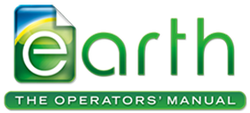 http://earththeoperatorsmanual.com/feature-video/earth-the-operators-manual
http://earththeoperatorsmanual.com/feature-video/earth-the-operators-manual
Climate & Energy!! ->
https://www.youtube.com/watch?v=lPgZfhnCAdI
Chs 15 & 16 (energy chapters)
ASSIGNMENT:
Be sure to type your responses and provide citations where necessary. Don't like Excel? Copy & paste the questions into Word and type your responses there.
|
| ||||||||||||
Review Questions for Ch 15: If you have been studying effectively, you should be able to answer the questions in the following document (posted as both Word & .pdf files). We'll review your responses before the exam.
|
| ||||||||||||

US Department of Energy: http://www.energy.gov
US Energy Information Administration: http://www.eia.gov/
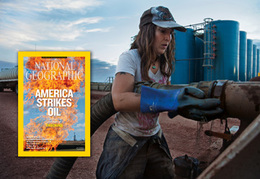
Natural Gas:
http://sixtyminutes.ninemsn.com.au/article.aspx?id=1052462 (hydraulic fracturing, Australia)
http://www.cbsnews.com/stories/2010/09/13/national/main6862186.shtml (CBS News, "Fracking", USA)
http://water.epa.gov/type/groundwater/uic/class2/hydraulicfracturing/index.cfm (EPA re: "Fracking")
http://www.desmogblog.com/about (check out their "fracking" report)
http://fracfocus.org/ (chemical disclosure registry)
http://news.nationalgeographic.com/news/2010/10/101022-breaking-fuel-from-the-rock/ ("Fracking graphic)
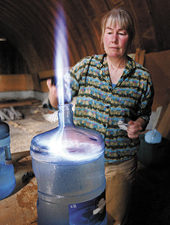
What is fracking? http://www.youtube.com/watch?v=mSWmXpEkEPg (Dr. Anthony Ingraffea)
Who is Anthony Ingraffea? http://www.cee.cornell.edu/people/profile.cfm?netid=ari1
(Films: Gasland, Gasland II, Splitestate)
http://oilandenergyinvestor.com/2014/08/risky-business-methane-rich-fire-ice/#deeplink (linked to Deepwater Horizon spill 8/27/14)
Aliso Canyon anyone?
|
Methane hydrates:
http://news.nationalgeographic.com/news/energy/2013/03/pictures/130328-methane-hydrates-for-energy/ (with additional links), http://www.usgs.gov/video/wr/menlopark/labs/gashydrate.html |
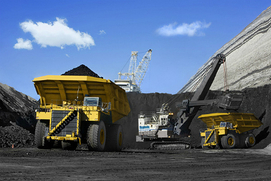
Centralia, Pennsylvania's ongoing coal fire: http://www.youtube.com/watch?v=fkHfnp2czZQ
December 2008 Sludge Spill, Tennessee: http://www.youtube.com/watch?v=rGmVCABMRRQ ; http://www.youtube.com/watch?v=BZhT4jx2XZ8
"Bog People" (anaerobic environments) http://ngm.nationalgeographic.com/2007/09/bog-bodies/bog-bodies-text
Chilean miners: http://www.businessweek.com/news/2010-08-26/chile-taps-nasa-for-unheard-of-trapped-miner-rescue.html
The story of AshCrete: http://www.washingtonpost.com/wp-srv/style/longterm/books/chap1/ecopioneers.htm
Coal ash rules inadequate: http://blogs.wvgazette.com/coaltattoo/category/coal-ash/
Relevant NGOs: Earthjustice and Appalachian Mountain Advocates
(Films: Kilowatt Ours, Coal Country)
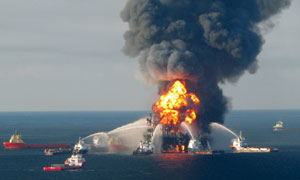
What does Matthew Simmons say about "Peak Oil"? http://video.google.com/videoplay?docid=-429585738009344102
How does M. King Hubbert explain "Peak Oil"? http://www.youtube.com/watch?v=UrW9Lm08UQQ
Nigerian Oil: http://ngm.nationalgeographic.com/2007/02/nigerian-oil/oneill-text
(Film: Oil on Ice)
Tar Sands/Oil Shale:
Canada's Tar Sands: http://fora.tv/2011/08/30/Canadas_Oil_Sands
"HOME": http://www.youtube.com/watch?v=jqxENMKaeCU
Canadian Tar Sands: http://www.ted.com/talks/garth_lenz_images_of_beauty_and_devastation.html
A great website that explains nuclear, in English!
http://www.explainthatstuff.com/how-nuclear-power-plants-work.html
How does a nuclear power plant work?
Okay, we've figured how to get energy from an atom, but the energy we've got isn't that helpful: it's just a huge amount of heat! How do we turn that into something much more useful, namely electricity? A nuclear power plant works pretty much like a conventional power plant, but it produces heat energy from atoms rather than by burning coal, oil, gas, or another fuel. The heat it produces is used to boil water to make steam, which drives one or more giant steam turbines connected to generators—and those produce the electricity we're after. Here's how:

- First, uranium fuel is loaded up into the reactor—a giant concrete dome that's reinforced in case it explodes. In the heart of the reactor (the core), atoms split apart and release heat energy, producing neutrons and splitting other atoms in a carefully controlled nuclear reaction.
- Control rods made of materials such as cadmium and boron can be raised or lowered into the reactor to soak up neutrons and slow down or speed up the chain reaction.
- Water is pumped through the reactor to collect the heat energy that the chain reaction produces. It constantly flows around a closed loop linking the reactor with a heat exchanger.
- Inside the heat exchanger, the water from the reactor gives up its energy to cooler water flowing in another closed loop, turning it into steam. Using two unconnected loops of water and the heat exchanger helps to keep water contaminated with radioactivity safely contained in one place and well away from most of the equipment in the plant.
- The steam from the heat exchanger is piped to a turbine. As the steam blows past the turbine's vanes, they spin around at high speed.
- The spinning turbine is connected to an electricity generator and makes that spin too.
- The generator produces electricity that flows out to the power grid—and to our homes, shops, offices, and factories.
|
Nuclear: TED.com Nuclear Power Debate-http://www.ted.com/talks/lang/eng/debate_does_the_world_need_nuclear_energy.html Steward Brand- http://www.ted.com/talks/lang/eng/stewart_brand_proclaims_4_environmental_heresies.html Where is waste stored? http://205.254.135.24/kids/resources/teachers/pdfs/WIPPSecondary.pdf video re: the future of nuclear in the US- http://www.linktv.org/video/6787/jim-riccio-on-the-future-of-the-us-nuclear-industry (LinkTV is an excellent site for videos re: environmental issues in general) US Energy Information Administration (re: nuclear): http://www.eia.gov/nuclear/ Conservation: Energy Star: http://www.energystar.gov/ Energy Efficiency: http://energy.gov/science-innovation/energy-efficiency CAFE Standards: http://www.ucsusa.org/clean_vehicles/solutions/cleaner_cars_pickups_and_suvs/fuel-economy-basics.html |
|
Chapter 16 (alternative, renewable energy sources)
In-class group presentations** in which your group will:
1. explain the alternative energy type you represent (how does it work?), 2. the advantages & disadvantages it offers,
3. anything noteworthy (not every bit of information!) about the amount of energy/electricity derived from that source in the US or worldwide, and finally, 4. inform your classmates about its prospects for the future.
**Please note: not all of these points can be covered for each of the alternative energies discussed in the chapter, so please use your better judgement and consult with me if you need clarification.
TOPICS will be assigned from the following list: 1. bio-mass, -power, -fuels; 2. hydropower; 3. solar;
4. wind; 5. geothermal; 6. ocean tides, waves & currents; 7. hydrogen & algae; & 8. energy conservation* & renewables, in general.
You may make limited use of online videos/animations, to augment not substitute for some portion of your presentation!!!
National RENEWABLE ENERGY Laboratory: http://www.nrel.gov/
US Department of Energy: http://www.energy.gov
US Energy Information Administration: http://www.eia.gov/
Past students' presentation: https://www.youtube.com/watch?v=tCCsOMnea2U
PROVIDED BY ONE OF YOUR CLASSMATES (re: sludge spill):
Review Questions Chs 16 & 6 (human population), plus "Conservation":
|
| ||||||||||||
 http://pixgood.com/human-population-clipart.html
http://pixgood.com/human-population-clipart.html
Ch 6: (Human Population)
Good population stats:
http://www.prb.org/Publications/Datasheets/2010/2010wpds.aspx;
http://www.census.gov/; https://www.cia.gov/library/publications/the-world-factbook/ National Geographic resources: http://ngm.nationalgeographic.com/video/player#/?titleID=7-billion-animation&catID=1 ; http://ngm.nationalgeographic.com/2011/01/seven-billion/kunzig-text NPR video re: Population: http://www.npr.org/2011/10/31/141816460/visualizing-how-a-population-grows-to-7-billion |
|
|
http://www.newsweek.com/2014/12/26/fixing-crowded-earth-293024.html According to the authors, one of the problems is "overpopulation"
|

Chs 11 & 17 Assignment: (mining & waste)
As with all assignments, indicate name, course, section number, date & title.
Part I:
1. Inventory ALL ELECTRONICS in your home.
2. Indicate the amount you use each item (once-a-day? every waking moment? not once in last 9 months?)
Part II:
1. Conduct research to identify how to dispose of, recycle or donate (or other?) one of those items in an environmentally responsible manner (aside from giving it to a friend or family member!).
2. Provide me with a type-written explanation as to that process.
3. Include reference information (Examples: Did you speak to someone on the phone? If so, who? Did you access the information online? If so, at what website address?)
You might find this site of use: http://www.epa.gov/osw/conserve/materials/ecycling/
Basel Action Network: http://www.ban.org/
Ch 11: (mining)
Global demand for metals: http://www.guardian.co.uk/commentisfree/2011/sep/01/environment-ethics-mining
Rare earth elements: (those elements that are essential for our electronics, & ultimately become a part of our e-waste, Ch 17)
From "60 Minutes":
1. http://www.cbsnews.com/news/rare-earth-elements-not-so-rare-after-all/
and this one:
2. http://www.cbsnews.com/videos/modern-lifes-devices-under-chinas-grip/
http://video.pbs.org/video/2209511572/ (a longer documentary for the more ambitious)
https://www.youtube.com/watch?v=QiQoMDZGCs4
Ch 17: (waste management)
"the really big energy savings might come from holding on to our computers and smartphones just a little -- or a lot -- longer": http://marketplace.publicradio.org/display/web/2011/10/26/pm-the-power-to-run-the-internet/
how to properly dispose of waste - http://www.ehow.com/dispose-of-waste/
"Trashed" (film shown in class) - where does YOUR garbage go? Due one week from date assigned.
MIT's "Trash Track" website - http://senseable.mit.edu/trashtrack/
E-Waste videos - http://www.cbsnews.com/stories/2008/11/06/60minutes/main4579229.shtml
("Electronic Wasteland", "E-Stewards", "Ship Breakers")
Closed-loop manufacturing:
1. (Okabashi Recyclable Shoes): http://www.youtube.com/watch?feature=player_embedded&v=HzsxOV_1f0g
2. Ray Anderson (Interface) : http://www.ted.com/talks/lang/en/ray_anderson_on_the_business_logic_of_sustainability.html
a. Other books by Paul Hawkens:
http://www.paulhawken.com/paulhawken_frameset.html
3. Cradle-to-Cradle Design:
http://www.ted.com/talks/william_mcdonough_on_cradle_to_cradle_design.html
Hazardous Waste Collection Events:
http://www.lacity.org/san/solid_resources/special/hhw/collection_schedule.htm
CA information page:
http://www.calrecycle.ca.gov/
What to do with hazardous and electronic waste & recycling (LA County & LA City):
http://dpw.lacounty.gov/epd/hhw/; http://lacitysan.org/services/index.htm
Professional organizations:
http://www.environmentalistseveryday.org/
San Francisco, Model City:
http://www.nytimes.com/2010/12/26/us/26bcintel.html?ref=earth
|
NY Times Magazine Magazine devoted to INDUSTRIAL AGRICULTURE - not to be missed!!!
http://nyti.ms/2dFBByL |
|
Recently in the NY Times: www.nytimes.com/2016/10/30/business/gmo-promise-falls-short.html
|
What is organic? http://www.usda.gov/wps/portal/usda/usdahome?contentidonly=true&contentid=organic-agriculture.html
Find local farmers markets, CSAs & Farms: http://www.localharvest.org/
http://www.environment.ucla.edu/events/237 (a UCLA Institute of Environment & Sustainability podcast of a talk about organic)
http://www.filmsforaction.org/walloffilms/ ("Dirt! The Movie", "Future of Food", "King Corn", "Food, Inc", "Harvest of Fear", "The Dust Bowl", "Vanishing of the Bees", "The Plow that Broke the Plains" (1936) - these films may be available on the wall of films site or via Amazon, Netflix, etc.) I can't speak to the following cuz I haven't yet seen 'em, but you can tell me if they are worthwhile -
“Cowspiracy: The Sustainability Secret”, "Fresh", "Food Fight", "Forks Over Knives" (a decent list? http://www.sustainableworks.org/resources/docs)
Books? Just about anything by Michael Pollan (example - "The Omnivore's Dilemma"). Not books re nutrition, but books about food production. "Dirt! The Book"
Articles? National Geographic's series from 2014 - http://food.nationalgeographic.com/
Crawford Family Forum events (past, present or future?) - http://www.scpr.org/events/forum/archive
REVIEW Chs 7, 11 & 17:
|
| ||||||||||||
Ch 10: (environmental health & toxicology)
Ted Talk w/ Dr. Hays: http://www.ted.com/talks/tyrone_hayes_penelope_jagessar_chaffer_the_toxic_baby.html
http://www.cosmeticsdatabase.com/ (safe cosmetic database)
http://environment.about.com/od/pollution/a/toxic_cars.htm (air quality inside cars)
http://www.healthystuff.org/ (broader content)
http://www.ewg.org/ (environmental working group)
http://architecture.about.com/cs/buildyourhouse/a/sickhouse.htm (indoor air quality)
http://air-purifier-reviewsite.com/blog/15-house-plants-you-can-use-as-air-purifiers/ (house plants as air purifiers)
http://plasticpollutioncoalition.org/2010/12/tedxgreatpacificgarbagepatch-arlene-blum/ (flame retardants)
http://www.youtube.com/watch?v=v6V22gwqxeY&feature=youtu.be (UCLA Institute of Environment & Sustainability talk re Green Chemistry)
http://plasticpollutioncoalition.org/2010/12/tedxgreatpacificgarbagepatch-ken-cook/ (more from President of EWG)
http://www.ourstolenfuture.org/ (Theo Colborn's "Our Stolen Future)
http://www.ewg.org/sites/humantoxome/ (Human Toxome Project)
http://www.drgreene.com/ (pediatrician's website)
http://www.ecomom.com/ (safe products for babies)
|
|
Risk Assessment
from the following site: www.geneticliteracyproject.org/2015/07/24/why-do-regulators-conclude-glyphosate-safe-while-iarc-almost-alone-claims-it-could-cause-cancer/ |
|
Air Quality inside of our cars (particulate pollution)
http://www.takepart.com/article/2015/02/24/your-car-slowly-killing-you-with-pollution |
|
EXTRA CREDIT for Ch 10: "Forgotten Genius" (the story of Percy Julian) http://www.pbs.org/wgbh/nova/physics/forgotten-genius.html |
Water Education Foundation http://www.watereducation.org/where-does-my-water-come
Bay-Delta: http://www.waterboards.ca.gov/waterrights/water_issues/programs/bay_delta/
Special Edition National Geographic re: Water: http://ngm.nationalgeographic.com/2010/04/table-of-contents
Salton Sea Web Resource: http://www.fws.gov/saltonsea/
http://www.nytimes.com/2014/11/11/us/-salton-sea-migrating-birds-preserving-a-mistake-made-by-our-meddling-with-nature-.html?hp&action=click&pg&module=photo-spot-region®ion=top-news&WT.nav=top-news&_r=1
|
DROUGHT
view image comparisons (NASA satellite data): http://earthobservatory.nasa.gov/IOTD/view.php?id=84032&eocn=image&eoci=related_image & http://earthobservatory.nasa.gov/IOTD/view.php?id=82910 Public Policy Institute re: Water in CA: http://www.ppic.org/main/publication.asp?i=902 |
http://www.cbsnews.com/news/depleting-the-water/
Not new: http://www.cbsnews.com/news/why-california-is-running-dry/ (2009)
Will El Nino save us? http://www.cbsnews.com/news/depleting-the-water/
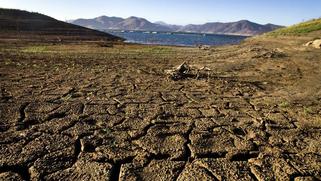
One of several articles on this subject...
http://www.latimes.com/science/la-me-megadrought-20141006-story.html#page=1
The latest on groundwater in the U.S. from the USGS (accessed 2/18/15) :
http://water.usgs.gov/nawqa/pubs/prin_aq/
Sustainable g.w. mgmt. act:
http://www.acwa.com/content/groundwater/groundwater-sustainability
Flyover of CA reservoirs (July, 2015): http://www.citylab.com/weather/2015/07/an-eye-opening-flight-over-californias-depleted-reservoirs/400010/ or https://www.youtube.com/watch?v=jJhRNWvEIis
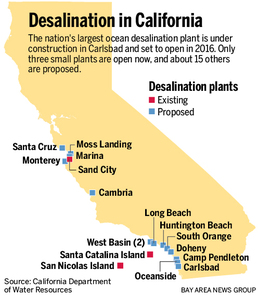
Desal
Desal in CA: http://www.mercurynews.com/science/ci_25859513/nations-largest-ocean-desalination-plant-goes-up-near ; http://www.theguardian.com/sustainable-business/desalination-boom-california-drought-reverse-osmosis
Desal w/ video: http://www.cbsnews.com/news/california-ocean-desalination-plant-drinking-water-in-san-diego/
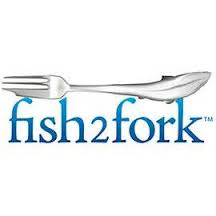
Update on/from Charles Clover re: End of the Line
http://fish2fork.com/en_GB/news/news/what-happened-next-charles-clover-ten-years-after-the-end-of-the-line
Where/what to eat in the U.S.
http://fish2fork.com/en_US
http://www.algalita.org/movs/pelagic_plastic_mov.html
The Majestic Plastic Bag - A Mockumentary:
http://www.youtube.com/watch?v=GLgh9h2ePYw
Or, the "Plastic Paradise" documentary -
http://plasticparadisemovie.com/
|
One inspiring story (from UCSB)
Direct link - https://science360.gov/obj/video/71a94c8d-c4d7-434c-9b61-146b41553c8a/plastic-pollution-oceans-future |
|
Another inspiring story (from theoceancleanup.com)
For additional info, look for Boyan Slat's TedTalk Link: https://youtu.be/6IjaZ2g-21E |
Ready for Chs 10 & 12? Test your knowledge:
|
| ||||||||||||
Tragedy of the commons, in action - http://www.baltimoresun.com/features/baltimore-insider-blog/bal-umd-tragedy-of-the-commons-tweet-goes-viral-20150709-htmlstory.html
Ecological Footprint Assignment* (to be printed on ONE page!)
1. Take the quiz on this website (www.myfootprint.org);
2. Print up your score (in numbers of planets and acres of land);
3. Indicate and print FIVE (5) ways that you can reduce your footprint (be thoughtful & realistic... we're not looking for a revolution here! For example, don't list that you are going to buy a Prius, start walking to & from work, 20 miles each way!)
4. Provide and print a critique of the quiz (in about one paragraph, explain why the quiz is effective & what it is lacking. In other words, do you think your score accurately reflects the way you live your life?)
* textbook pages 6 & 19
Not clear as to how to proceed? See template below.**
Scientific Method (GROUP) Assignment (more to come!)
This assignment is an opportunity for you to demonstrate that you understand the scientific method by applying the scientific method.
Design a study/experiment to answer a question that you pose. You will be sharing your results with your classmates. You may use pdf, poster, video, handouts...
Keep in mind, I am familiar with Google myself... do not get an example online (I've seen 'em all). Design your own! Live dangerously, and conduct this assignment without the Internet as a crutch. Use your imagination - Ask a question(s) about the world around you (based on observations you've made), and design an experiment or study to answer that question.
Ask me to okay your idea before moving ahead with it.
1. Observe world around you.
2. Come up with a question(s) about the world around you.
3. Propose an explanation for why the world around you is the way it is.
4. Design an experiment to determine if your explanation for why the world is the way it is is valid.
5. Conduct your experiment.
6. Type-up your work, including your results.
7. Share them with your instructor and your classmates (you may use pdf, video, poster, handouts... anything else in mind? ask me).
8. Have fun with it. The presentations will be scored by your classmates, those with the highest numbers of votes, will earn extra credit.
Helpful link for Scientific Method -
You might find this helpful: http://www.ncsu.edu/labwrite/
** Eco Footprint Template. Print screen ("PrtScn") to capture graph of acres.
| eco_footprint_template.doc | |
| File Size: | 199 kb |
| File Type: | doc |
| eco_footprint_template.pdf | |
| File Size: | 93 kb |
| File Type: | |
Ch 3:
|
Elizabeth Kolbert talking about the 6th Mass Extinction, at Oregon State and on "The Daily Show" (https://www.youtube.com/watch?v=avoq05Z1K6w and http://www.cc.com/video-clips/zj9x9i/the-daily-show-with-jon-stewart-elizabeth-kolbert)
|
Ch 5:
| asian_mosquito_in_el_monte.pdf | |
| File Size: | 138 kb |
| File Type: | |
FINAL EXAM REVIEW:
Please note: the chapter order is a little different in the 4th edition of our text, but the concepts remain the same (in other words, this study guide still works!).
| ex_6_study_guide_chs_1_5.pdf | |
| File Size: | 7 kb |
| File Type: | |
| ex_6_study_guide_chs_1_5.doc | |
| File Size: | 33 kb |
| File Type: | doc |
--------------------------------Miscellaneous------------------------------
------------------------------------------------------------------------------
Not sure where to put this, but this is brand new!
What's LA doin' to be "green":
http://www.greenbiz.com/article/las-new-plan-go-smog-and-sprawl-sustainability-leader?mkt_tok=3RkMMJWWfF9wsRohuqXKZKXonjHpfsX56u4rWqa1lMI%2F0ER3fOvrPUfGjI4HRcdgI%2BSLDwEYGJlv6SgFSLHEMa5qw7gMXRQ%3D
http://www.environmentla.org/
In Honor of Earth Day: http://video.pbs.org/video/1463378089/
What's the latest environmental news? http://www.emagazine.com/
2010 in Review (per NY Times Environment Blog):
http://green.blogs.nytimes.com/2010/12/31/2010-an-untameable-spill-an-unpassable-bill/?ref=science
http://education-portal.com/academy/course/environment-and-humanity.html?hq_e=el&hq_m=1598930&hq_l=16&hq_v=ba657feb8c
Something we all could stand to improve: our ability to critically analyze information sources (e.g. internet resources): http://guides.library.cornell.edu/criticallyanalyzing
Interested in a career in science?
Want to know what you can do for the environment? See these links (provided by myself and your classmates):
http://green.yahoo.com/blog/the_conscious_consumer/50/energy-vampires-fact-versus-fiction.html
Use www.blackle.com as your Google search engine - the black page reduces energy use!
"all you have to do is answer questions and for every right answer they will donate 20 grains of rice":
http://www.freerice.com/
or:
http://www.wfp.org/english/
